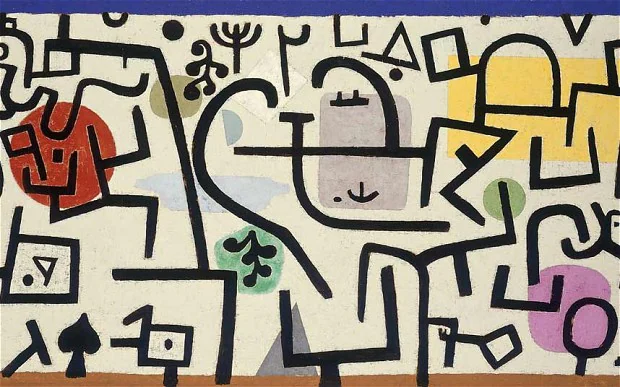Age Regression
- lsimonsart
- Aug 24
- 3 min read
Having conversations with fellow artists, a common description of my work was describing the palette I frequently employ (cyan, magenta, yellow) as youthful, childlike, and dreamlike. This observation recalled earlier works in which I utilised coloured lighting or coloured filters, where I had observed a shift in audience behaviour. Viewers often engaged with these installations in ways uncharacteristic of conventional gallery etiquette. They altered their bodily movement, gestured animatedly, and interacted with the space with an almost tactile curiosity.
Upon reflection, these behavioural shifts bear resemblance to a psychological process known as age regression—a temporary reversion to cognitive, emotional, and behavioural modes associated with earlier developmental stages. This phenomenon provides a framework for examining how visual and sensory strategies in art might elicit altered audience states.
In Freud's psychoanalytic model, regression is a defence mechanism—a retreat to earlier developmental stages when faced with anxiety or stress. Carl Jung saw it differently, as a creative return to the puer aeternus, translated to English as 'eternal youth'. Today psychologists distinguish between involuntary regression, which often happens during emotional overwhelm, and voluntary regression, which can be a conscious coping strategy. While early psychoanalysis treated it as something to be avoided, more recent thinking recognises its potential to be adaptive, restorative, and even creatively generative.
Art offers a unique space where regression can happen, both for the artist making the work and for the audience encountering it. On the making side, processes that echo early creative play, such as scribbling, hand-mixing colour, and letting composition emerge intuitively, can temporarily bypass the critical, outcome-driven mindset we carry into adulthood. For audiences, certain formal strategies, such as simplified shapes, saturated colours, immersive light, can short-circuit analytical thinking and take them straight into sensory memory. In my practice, the bright CMY palette, lighting and filters (when used), and soft textures, seem to open a doorway to that state. When physically utilising the filtered effects (Samoiloff effect), I can observe people responding to the work, not by standing still and reading the work, but by moving through it, playing with light and shadow, and sharing little moments of discovery with each other.
Regression isn't a new idea. Plenty of artists have utilised childlike aesthetics to open up complex questions. Paul Klee's deceptively simple marks are both whimsical and deeply symbolic. Jean Dubuffet's art brut challenged the boundaries of serious art by drawing from the raw, untrained language of children's drawings. Yoshitomo Nara's wide-eyed figures balance innocence with defiance, giving the child form a political and emotional charge.
Image 1: Henshaw, Chelsie. 2013. “Escenic.” The Telegraph. October 15, 2013. https://www.telegraph.co.uk/culture/art/art-features/10380084/Paul-Klee-the-misunderstood-master-of-modern-art.html.
Image 2: “Jean Dubuffet & Art Brut | Exhibition | Peggy Guggenheim Collection.” 2025. Guggenheim-Venice.it. 2025. https://www.guggenheim-venice.it/en/whats-on/exhibitions/jean-dubuffet-art-brut/.
Image 3: Meyer, Isabella. 2024. “Yoshitomo Nara - a Look at Contemporary Japanese Pop Art.” Art in Context. May 6, 2024. https://artincontext.org/yoshitomo-nara/.
When an artwork nudges someone into a regressed state, it doesn't always land the same way. For some it's deeply pleasurable, nostalgic, and comforting, almost like coming home. For others, it can be unsettling, especially if childhood memories carry ambivalence.
In my previous installations, I have noticed how these moments of regression have a social side. Once the 'rules' of adult behaviour loosen, people talk to each other more, make eye contact, even laugh together. That momentary connection feels just as much a part of the work as the colours or the light.
Seeing regression as a form of creative openness and not as a step backwards, challenges how I think about my own practice. If my work invites people into that 'inner child' space, then the palette, light, and atmosphere aren't just visual tools—they're a way of offering a temporary shift in how we inhabit the world. In that moment, seriousness gives way to curiosity, and individual viewing becomes shared play.
Jones, Brandi. “Age Regression: Trauma, Coping Mechanisms, and Therapy Info Getty.” Verywell Health, May 1, 2023. https://www.verywellhealth.com/age-repression-therapy-5212676.
Kong, Wenyuan, Teng Fei, and Thom Jencks. “Emotion and Color in Paintings: A Novel Temporal and Spatial Quantitative Perspective.” Arxiv.org, January 31, 2021. https://arxiv.org/abs/2102.00407.
Loeppky, John. “Age Regression in Adults and Why It Happens.” Verywell Mind, 2024. https://www.verywellmind.com/age-regression-in-adults-and-why-it-happens-8666127.
Mcleod, Saul. “Defense Mechanisms in Psychology Explained (+ Examples).” Simplypsychology.org. Simply Psychology, January 25, 2024. https://www.simplypsychology.org/defense-mechanisms.html.
Mercer, Jean. “The Concept of Psychological Regression: Metaphors, Mapping, Queen Square, and Tavistock Square.” History of Psychology 14, no. 2 (2011): 174–96. https://doi.org/10.1037/a0022710.
Muragul Muratbekova, and Pakizar Shamoi. “Color-Emotion Associations in Art: Fuzzy Approach.” IEEE Access 12 (January 1, 2024): 1–1. https://doi.org/10.1109/access.2024.3375361.
Rogers, Kara. “Regression | Psychology.” Encyclopedia Britannica, July 5, 2023. https://www.britannica.com/science/regression-psychology.






